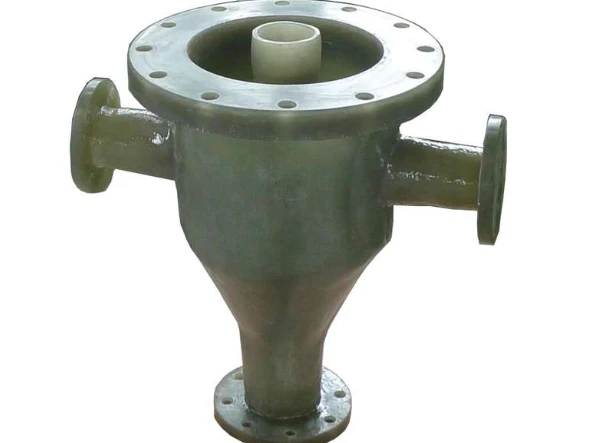
-
 Afrikaans
Afrikaans -
 Albanian
Albanian -
 Amharic
Amharic -
 Arabic
Arabic -
 Armenian
Armenian -
 Azerbaijani
Azerbaijani -
 Basque
Basque -
 Belarusian
Belarusian -
 Bengali
Bengali -
 Bosnian
Bosnian -
 Bulgarian
Bulgarian -
 Catalan
Catalan -
 Cebuano
Cebuano -
 China
China -
 China (Taiwan)
China (Taiwan) -
 Corsican
Corsican -
 Croatian
Croatian -
 Czech
Czech -
 Danish
Danish -
 Dutch
Dutch -
 English
English -
 Esperanto
Esperanto -
 Estonian
Estonian -
 Finnish
Finnish -
 French
French -
 Frisian
Frisian -
 Galician
Galician -
 Georgian
Georgian -
 German
German -
 Greek
Greek -
 Gujarati
Gujarati -
 Haitian Creole
Haitian Creole -
 hausa
hausa -
 hawaiian
hawaiian -
 Hebrew
Hebrew -
 Hindi
Hindi -
 Miao
Miao -
 Hungarian
Hungarian -
 Icelandic
Icelandic -
 igbo
igbo -
 Indonesian
Indonesian -
 irish
irish -
 Italian
Italian -
 Japanese
Japanese -
 Javanese
Javanese -
 Kannada
Kannada -
 kazakh
kazakh -
 Khmer
Khmer -
 Rwandese
Rwandese -
 Korean
Korean -
 Kurdish
Kurdish -
 Kyrgyz
Kyrgyz -
 Lao
Lao -
 Latin
Latin -
 Latvian
Latvian -
 Lithuanian
Lithuanian -
 Luxembourgish
Luxembourgish -
 Macedonian
Macedonian -
 Malgashi
Malgashi -
 Malay
Malay -
 Malayalam
Malayalam -
 Maltese
Maltese -
 Maori
Maori -
 Marathi
Marathi -
 Mongolian
Mongolian -
 Myanmar
Myanmar -
 Nepali
Nepali -
 Norwegian
Norwegian -
 Norwegian
Norwegian -
 Occitan
Occitan -
 Pashto
Pashto -
 Persian
Persian -
 Polish
Polish -
 Portuguese
Portuguese -
 Punjabi
Punjabi -
 Romanian
Romanian -
 Russian
Russian -
 Samoan
Samoan -
 Scottish Gaelic
Scottish Gaelic -
 Serbian
Serbian -
 Sesotho
Sesotho -
 Shona
Shona -
 Sindhi
Sindhi -
 Sinhala
Sinhala -
 Slovak
Slovak -
 Slovenian
Slovenian -
 Somali
Somali -
 Spanish
Spanish -
 Sundanese
Sundanese -
 Swahili
Swahili -
 Swedish
Swedish -
 Tagalog
Tagalog -
 Tajik
Tajik -
 Tamil
Tamil -
 Tatar
Tatar -
 Telugu
Telugu -
 Thai
Thai -
 Turkish
Turkish -
 Turkmen
Turkmen -
 Ukrainian
Ukrainian -
 Urdu
Urdu -
 Uighur
Uighur -
 Uzbek
Uzbek -
 Vietnamese
Vietnamese -
 Welsh
Welsh -
 Bantu
Bantu -
 Yiddish
Yiddish -
 Yoruba
Yoruba -
 Zulu
Zulu
frp ductwork
Understanding FRP Ductwork Benefits, Applications, and Installation
FRP ductwork, short for Fiberglass Reinforced Plastic ductwork, is an advanced solution to various ventilation and exhaust challenges faced by many industries today. Its unique composition and properties make it a preferred choice over traditional materials like metal or PVC, especially in environments that require durability, corrosion resistance, and lightweight materials. This article will delve into the benefits, applications, and installation of FRP ductwork.
What is FRP Ductwork?
FRP ductwork is made from a composite material that combines fiberglass with a resin matrix. This material is engineered to provide excellent mechanical strength, resistance to harsh chemicals, and lower weight, making it ideal for numerous commercial and industrial applications.
Benefits of FRP Ductwork
1. Corrosion Resistance One of the most significant advantages of FRP ductwork is its exceptional resistance to corrosion. Unlike steel or aluminum, which can rust or corrode when exposed to moisture and certain chemicals, FRP can withstand a wide range of corrosive substances, making it ideal for chemical processing plants, waste treatment facilities, and other challenging environments.
2. Lightweight FRP is significantly lighter than traditional duct materials. This feature simplifies handling, transportation, and installation, reducing labor costs and installation time. Its lightweight nature also means less structural support is required, which can lead to further savings in construction.
3. Thermal Insulation Due to its non-metallic composition, FRP ductwork provides better thermal insulation compared to metal ducts. This property helps in maintaining the desired temperature within air handling systems, improving energy efficiency.
4. Customizability FRP ductwork can be easily fabricated into various shapes and sizes to meet specific requirements. This flexibility allows for more efficient designs that can fit into tight spaces or accommodate complex routing needs.
5. Low Maintenance The durability of FRP leads to lower maintenance requirements over the lifespan of the ductwork. Its resistance to the buildup of materials, along with its non-porous surface, makes cleaning easier and less frequent compared to traditional materials.
Applications of FRP Ductwork
FRP ductwork is utilized in a variety of applications, including
frp ductwork

- Chemical Processing Facilities Given its resistance to corrosive chemicals, FRP is commonly used in industries that handle acids, bases, and other aggressive substances. - Wastewater Treatment Plants The ability to withstand moisture and chemical exposure makes FRP ductwork an ideal choice for wastewater management systems.
- Food and Beverage Industry In processes where hygiene is paramount, FRP’s ease of cleaning and resistance to bacteria growth play a crucial role.
- Pharmaceutical Manufacturing The sterile environments required in pharmaceutical plants can benefit from the non-contaminating nature of FRP materials.
- HVAC Systems in Marine Applications The maritime industry often faces the challenges of high humidity and corrosive saltwater, making FRP ducts an excellent choice for ship HVAC systems.
Installation Considerations
While FRP ductwork offers numerous benefits, certain considerations must be taken into account during installation
- Surface Preparation Proper surface preparation is essential to ensure adhesion, especially when joining sections. Any oil, dust, or moisture must be removed before installation.
- Correct Joining Methods Depending on the specific application, various joining methods (such as adhesive bonding or mechanical fasteners) may be used. The choice will affect the integrity and durability of the system.
- Temperature Considerations FRP materials can be sensitive to extreme temperatures, which may affect their performance. Installations should take into account the operational temperature range.
- Compliance with Standards Ensure that the FRP ductwork complies with local codes and standards, including fire safety regulations, to guarantee safety and operational efficiency.
Conclusion
In summary, FRP ductwork presents a versatile and efficient solution for various industrial applications requiring durability, corrosion resistance, and lightweight properties. With its numerous benefits, it has become an integral part of many modern ventilation and exhaust systems, pushing the boundaries of traditional ductwork while promoting enhanced performance and reliability. As industries continue to evolve, the adoption of innovative materials like FRP will likely expand, offering new opportunities for efficiency and safety in environmental control systems.









